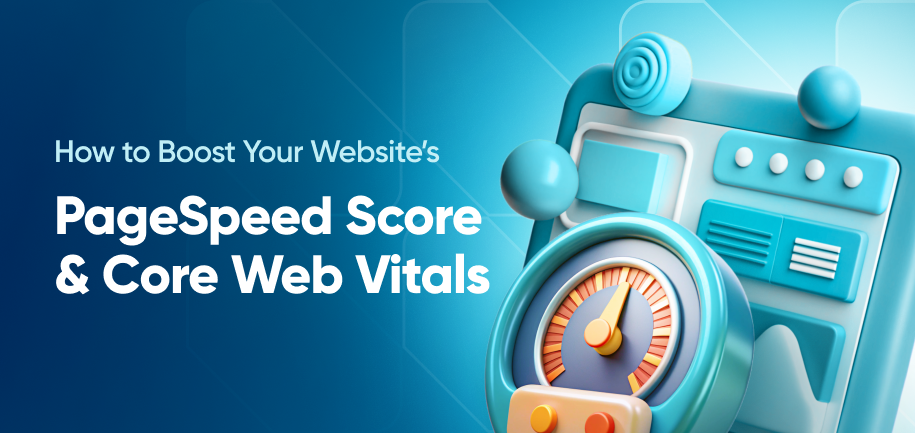Your Magento store’s user experience (UX) plays a critical role in converting visitors into loyal customers. A seamless, intuitive UX directly impacts sales, retention, and overall brand perception. While optimized usability can triple your conversion rates, a poor user experience can drive away up to 62% of customers, permanently.
In this article, we’ll explore Magento UX best practices and break down the key components of a Magento UX audit to help you uncover and fix friction points that may be costing you sales.
Why Magento UX Matters
A well-crafted UX ensures that users can effortlessly browse your Magento store, find products without confusion, and complete purchases with minimal effort. A Magento UX audit helps identify design flaws, technical obstacles, and usability gaps that may be hindering your store’s performance – and ultimately, your revenue.
Read More: 12 Magento UX Mistakes to Avoid
Key Components of a Magento UX Audit
A comprehensive UX audit involves evaluating several aspects of your Magento store:
1. Navigation and Site Structure
Your site’s navigation should be so intuitive that users never feel lost. Ideally, customers should be able to locate any product within three clicks. A well-structured menu with clearly labeled categories and subcategories ensures frictionless browsing. Layered navigation and smart filters help users quickly narrow down search results by size, color, price, or other attributes.
Try this: Amasty Improved Layered Navigation helps organize your product catalog into user-friendly filters, enabling customers to refine results without page reloads—essential for stores with large inventories.
2. Mobile Responsiveness
Over half of all e-commerce traffic now comes from mobile devices. If your Magento store isn't mobile-optimized, you're likely losing a significant chunk of potential sales. A responsive design ensures your layout, text, buttons, and images scale correctly across screen sizes and devices, maintaining usability without pinching, zooming, or endless scrolling.
Tip: Use Google’s Lighthouse or PageSpeed Insights to assess your store’s responsiveness. To further improve the experience, ensure all frontend customizations align with Magento PWA (Progressive Web App) principles.
3. Checkout Process
A lengthy or confusing checkout is one of the top causes of cart abandonment. The goal is to reduce the number of steps and eliminate friction points. Allow guest checkout, auto-fill billing and shipping information, and offer popular payment gateways.
Recommended tool: Amasty’s One Step Checkout simplifies the entire checkout into a single, user-friendly page, helping to lower abandonment rates and improve conversion. It also supports various payment and shipping integrations, enhancing convenience for your customers.
Read More: How to Optimize Magento Checkout
4. Visual Design and Content
A clean, attractive design paired with compelling content makes your store easier to navigate and more persuasive. Use bold, action-oriented CTA buttons ("Buy Now", "Add to Cart") and ensure they are easy to spot. Product pages should feature high-quality images, zoom-in functionality, and bulletproof product descriptions.
Boost UX with: Amasty Product Labels to highlight promotions or bestsellers, and Amasty Product Attachments to organize content like specifications, reviews, and FAQs in a clean, tabbed layout, making product pages more informative without clutter.
5. Performance and Load Times
Speed is a key UX and SEO factor. Every additional second your page takes to load increases the chances of a visitor bouncing. Common performance culprits include uncompressed images, excessive third-party scripts, and unoptimized hosting.
Optimize with: Amasty Google Page Speed Optimizer, which automatically compresses images, minifies CSS/JS, and implements lazy loading. These enhancements can significantly cut load times and improve Google Core Web Vitals scores, benefiting both UX and SEO.
Read More: 19 Ways to Improve Magento Performance
Best Practices to Maximize Magento UX Impact
Each UX best practice plays a unique role in shaping how users interact with your store. Here’s how to expand on the checklist and apply each strategy effectively:
Simplify Navigation
Go beyond basic menus. Mega menus allow you to present multiple categories and subcategories in an organized, visually appealing format. Group similar items together and consider using icons or product thumbnails for faster recognition. Use Amasty’s Mega Menu for Magento 2 to create a dynamic navigation structure that enhances discoverability without overwhelming the user.
Optimize Search Functionality
Modern customers expect real-time results as they type. Enhance your search bar with autocomplete, typo tolerance, and smart suggestions for a faster path to purchase. Amasty’s Advanced Search improves product discovery with intelligent search features that support filtering, synonyms, and auto-suggestions.
Personalize User Experience
Leverage customer behavior and purchase history to offer dynamic content such as product recommendations, tailored promotions, and custom landing pages. Personalized UX boosts engagement and increases average order value. Consider Customer Segmentation to display personalized content and promotions to specific user groups based on behavior or demographics.
Ensure Consistent Branding
Maintain visual harmony across the homepage, product pages, and checkout. Fonts, button styles, and messaging should align with your brand identity to build trust and brand recognition. Establish a reusable style guide for your Magento store and stick to a limited color palette for consistency.
Use High-Quality Visuals
Invest in professional product photography, and complement it with 360-degree views, video demos, or lifestyle shots. Visuals should reduce doubt and help customers visualize the product in real life.
Read More: 12 Magento UX Mistakes to Avoid
How to Conduct a Magento UX Audit: Step-by-Step
A structured UX audit will help uncover gaps that are affecting user satisfaction and sales performance. Here’s how to go beyond the basics:
- Analyze User Behavior – Use heatmaps, scroll maps, and session recordings (via tools like Hotjar or Clarity) to visually understand where users hesitate, drop off, or get lost.
- Evaluate Site Performance – Use tools like PageSpeed Insights, GTmetrix, or WebPageTest to identify bottlenecks in load speed, mobile responsiveness, and resource handling.
- Review Design Elements – Evaluate the consistency of UI components like CTAs, headlines, buttons, and form fields. Each element should follow a cohesive style and serve a purpose. If users struggle to identify clickable elements, revisit your visual hierarchy.
- Test Functionality Across Devices – Perform manual and automated testing on popular devices and browsers. Check for interactive elements like popups, buttons, or sliders that may break under certain screen sizes or touch conditions.
- Gather User Feedback – Conduct surveys, collect reviews, or use exit intent popups to ask users what frustrated them most. A small sample of customer feedback can highlight major usability flaws your analytics might miss. You can also use website annotation tools for design review to gather visual input from team members or stakeholders before implementing UX changes.
Ready to Improve Your Magento Store’s UX?
A smooth, intuitive shopping experience can make all the difference between a one-time visitor and a loyal customer. If you're unsure where your store stands or need expert guidance, our Magento UX/UI Audit Services are here to help.
- Identify usability issues
- Optimize customer journeys
- Boost conversions with actionable insights
Book your Magento UX Audit and let our experts turn your store into a high-performing sales machine.





















